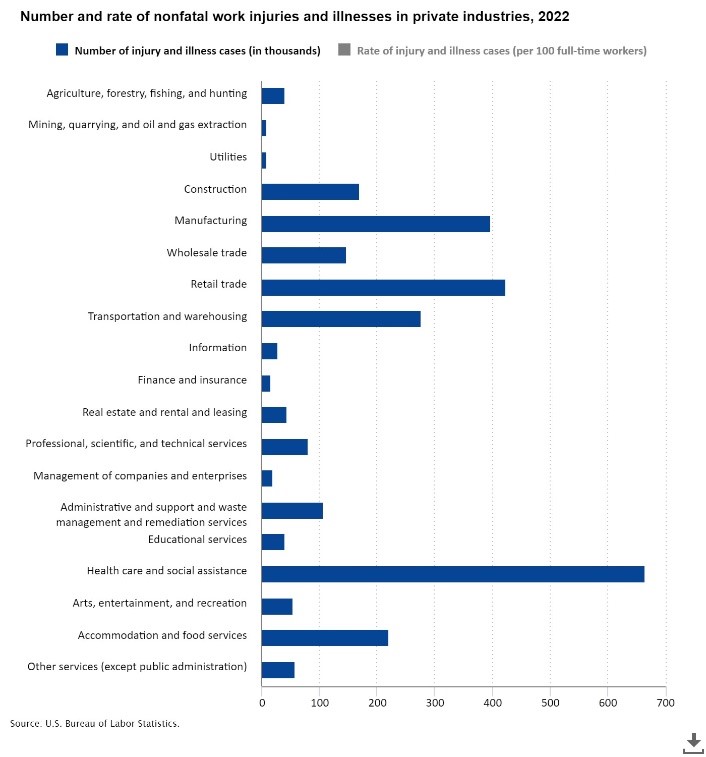When thinking about the risk of injury on the job, what industry takes the top spot for rates of injury? One may be surprised to learn that healthcare workers experience the highest injury rates of any industry. This statistic is alarming: Those who dedicate their lives to caring for others suffer more on-the-job injuries than any other sector.

Why are so many healthcare professionals suffering from workplace injuries? Given their expertise in the body and its mechanics, one might assume they would be adept at safeguarding themselves. However, the situation is far more complex. Workplace injuries typically arise from cumulative trauma, repetitive strain, or overuse rather than isolated incidents. Joints are particularly vulnerable due to their constant use.
Injuries can have various symptoms, including discomfort, soreness, and pain. However, experiencing these symptoms does not always mean you have an injury. Muscle aches and soreness are common after exercise, mainly if you are not used to the activity. These symptoms subside with rest or adaptation to the activity.
In contrast, symptoms that persist, including numbness, tingling, dysfunction, disrupted sleep, or interference with daily activities, are the body’s signals to pay attention.
Common risk factors among the medical and dental community include:
How do ergonomics come into play with workplace injuries? Ergonomics is all about designing the work to fit the worker, not the other way around. By examining each task, ergonomics can lessen incident rates by adjusting the work appropriately.
Here are a few simple examples:
Common Risk Factors
Lifting heavy objects increases the risk of injury. Strain on the back when lifting something heavy can cause stress and damage the structures of your spine. Interestingly, even repetitive lifting of lightweight objects can be equally hazardous due to muscle fatigue.
Lifting while reaching can also pose risks. This position moves the body from its normal central or neutral posture, which is the strongest position, making injury more likely.
Working at a low position can be awkward, and bending, kneeling, or squatting can be uncomfortable. Raising work to a more comfortable height or using a low stool can allow an employee to be closer to the work level. Even using long-handled tools is an option. Be creative; if there is difficulty, brainstorm ideas to help eliminate the hazard causing the pain!
Things that reduce repetitive motions include:
When are symptoms severe enough to need attention?
What can be done about injuries?
1. Eliminate the hazard when possible.
2. Education
a. Learning about the injury can help devise ways to prevent them
3. Add ergonomic equipment or tools to reduce the hazard
4. Reduce the time employees are exposed to a risk
a. Task rotation
b. Staff rotation
c. Breaks
5. Another option is Ergonomic PPE: We are all familiar with Personal Protective Equipment in healthcare, including masks and gloves to protect against bloodborne pathogens, but there is also Ergonomic PPE. Examples include:
a. Using padding to reduce direct contact with hard or sharp surfaces
b. Wearing thermal gloves to help with cold conditions while maintaining the ability to grasp items easily
c. Wearing non-slip shoes to prevent falls
Simple Computer Adjustments:
Think outside the box and look at ways to increase your comfort and decrease pain. The high injury rates in healthcare reveal a significant issue that must be addressed. Employers must invest in creating a safer, more ergonomic workspace that both protects employees and ensures quality patient care.